

Wes Nofire tapped for Native American liaison role in Oklahoma governor's office
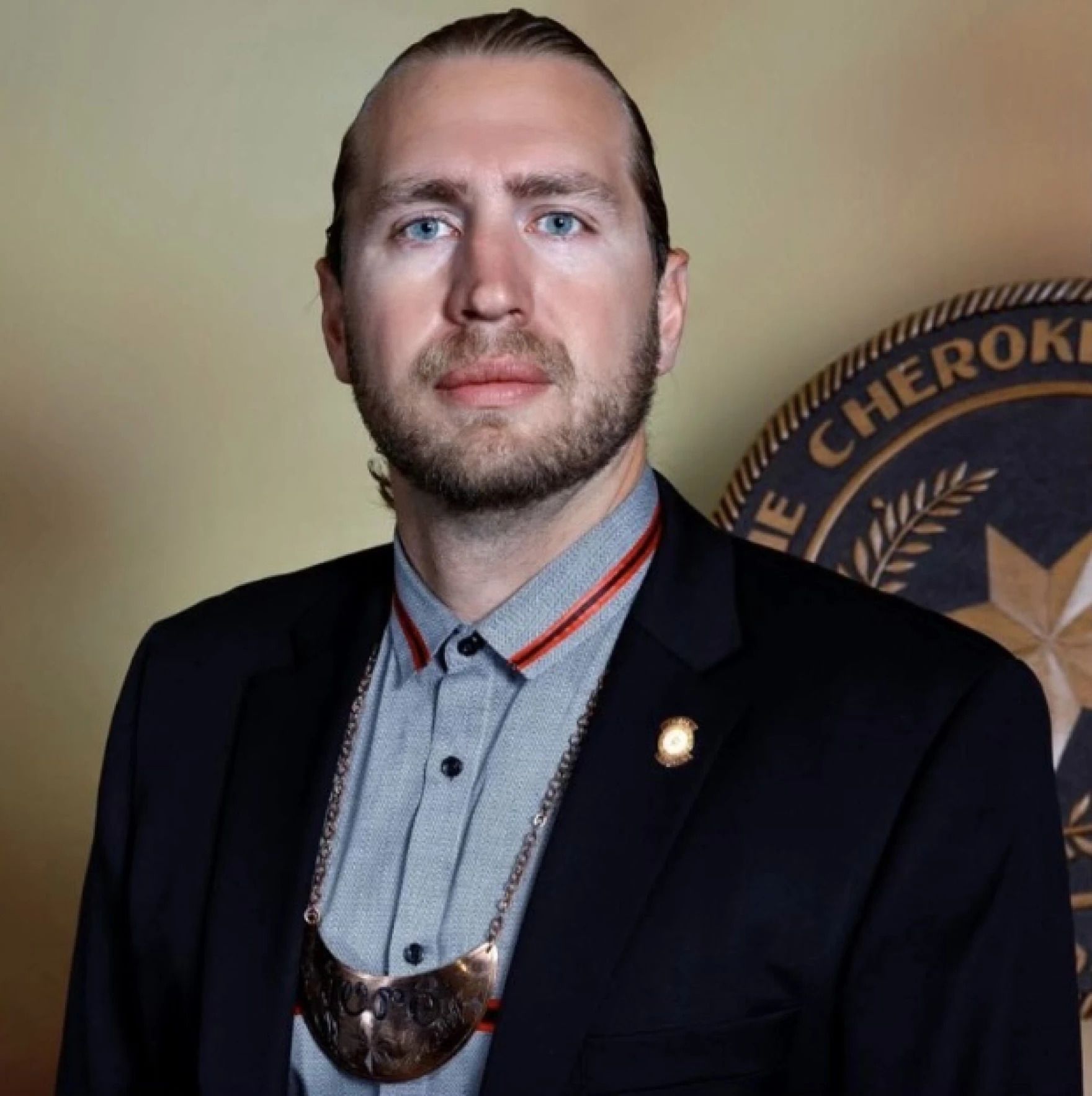
By Allison Herrera, KOSU
Gov. Kevin Stitt says former Cherokee Nation tribal council member Wes Nofire will be "a bridge" between his office and the state's tribal nations.
Nofire vacated his seat on the tribal council to run for Principal Chief of the Cherokee Nation last spring. He has openly criticized the McGirt v. Oklahoma decision, as tribal nation leaders tout it as a win for their sovereignty.
Stitt says he's bringing Nofire to build bridges with his office and tribal communities throughout the state.
“Wes brings a deep familiarity with tribal governments and people across Oklahoma. His work for the Cherokee government makes him an ideal choice as we build bridges between my office and tribal governments,” Stitt said in a statement.
Former state Representative and current Chickasaw Tribal Legislature member Lisa Billy served as the first Secretary of Native American Affairs in the Stitt administration. She left in 2019 after saying Stitt was creating "unnecessary conflict" with the tribes in the state in her resignation letter.
She was replaced by Brian Bingman, who serves double-duty as Secretary of State.
Cherokee Nation Principal Chief Chuck Hoskin Jr. who was just sworn in for a second term last week said the appointment was disappointing.
"We continue to hope for a day in which the depths of knowledge of Indian Country issues on Governor Stitt’s team deepens. It’s now shallower," Hoskin Jr. wrote.
"Wes Nofire’s brief time in elected office was marked by a hostility toward Cherokee tribal sovereignty, a lack of understanding broadly of the issues facing Indian Country, and his peddling of conspiracy theories about Cherokee Nation, which can only be described as unhinged,” he said in a written statement. “Governor Stitt’s stances toward tribes, the most hostile in state history, will now be informed by someone who aligns closely with the Governor’s own views, sadly. Fortunately, there are a broad array of state leaders with whom we can and will continue to work.”
Muscogee Nation Principal Chief David Hill also panned the appointment, arguing Nofire is unlikely to have a significant impact in the Stitt administration.
"I don't think his staff has been the issue," Hill said in a statement. "The Governor sets the direction for his administration and he has made it clear that his policy is hostility towards tribes and their authority. It's hard to see one staff appointment changing that."
In 2022, Nofire also unsuccessfully ran for a seat in Oklahoma's 2nd Congressional District.
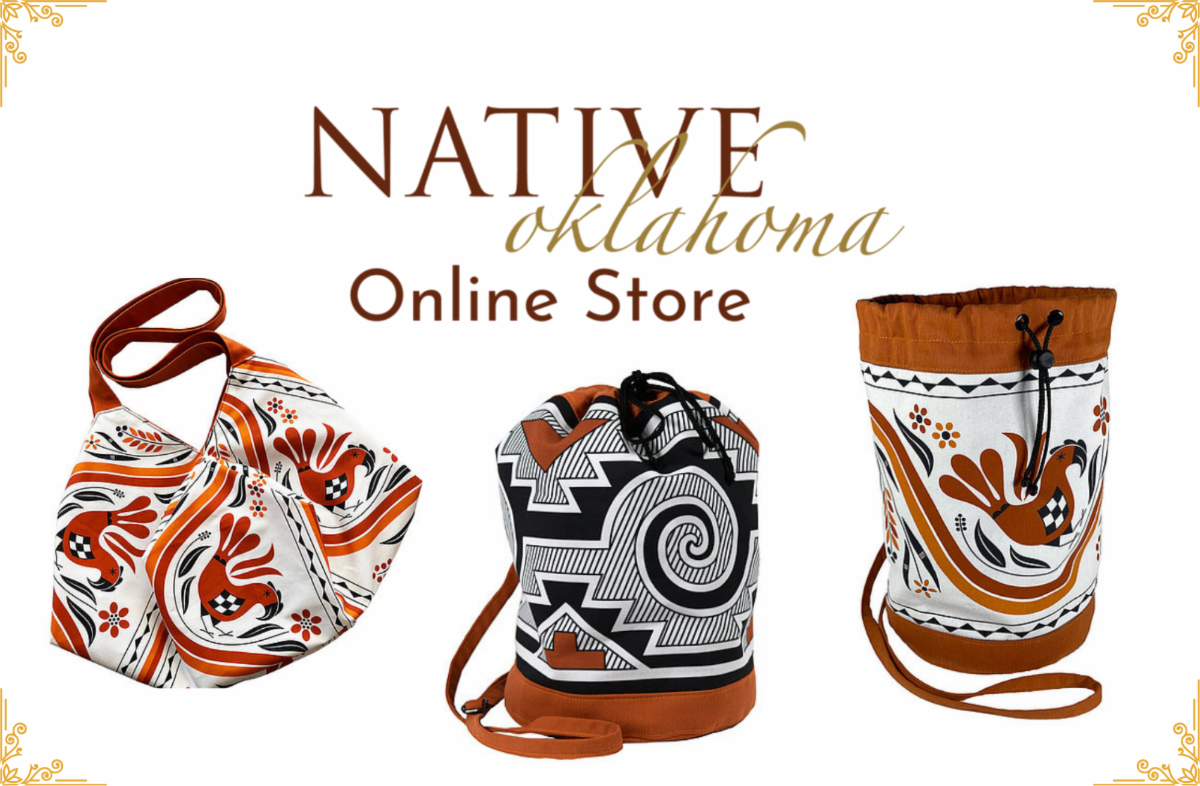
Chickasaw Nation gears up to host Southeastern Art Show and Market
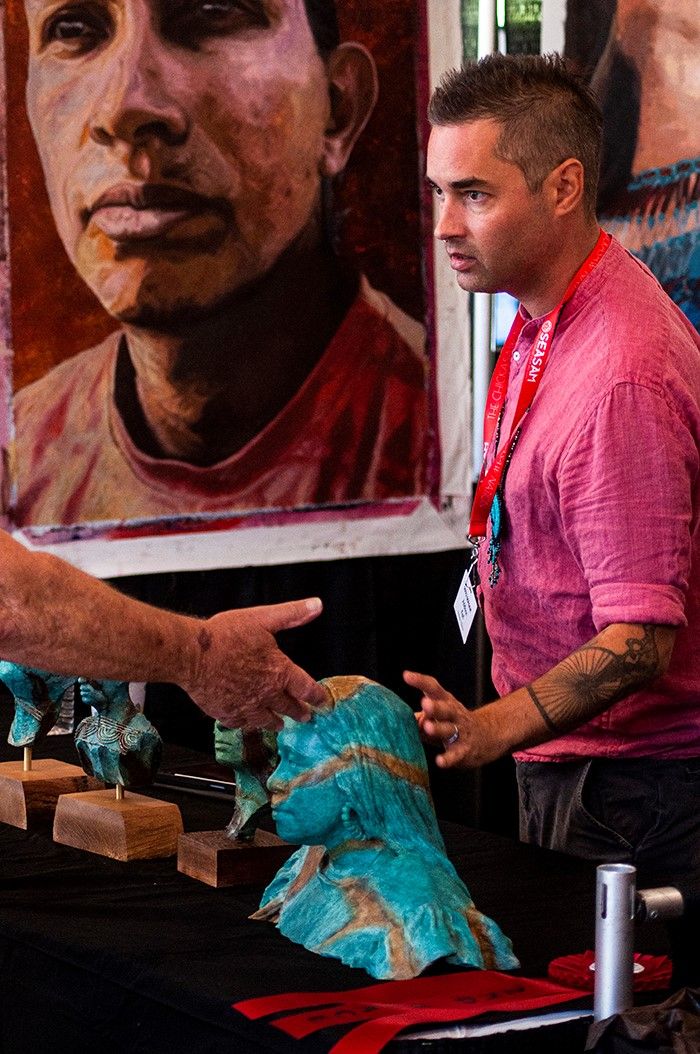
TISHOMINGO, Okla. – Chickasaw Nation Governor Bill Anoatubby’s vision of showcasing Southeastern Indian artists will celebrate its 18th anniversary Oct. 6-7 during Chickasaw Annual Meeting and Festival.
A bevy of artists representing the Five Civilized Tribes – Chickasaw, Cherokee, Choctaw, Muscogee and Seminole – along with other Southeastern Indian tribes will showcase authentic Southeastern Indian art.
Jewelry, fashion, weapons, painting, sculpture and much more will be on display at the Southeastern Art Show and Market (SEASAM) 9 a.m. to 5 p.m. Oct. 6 and from 11 a.m. onward Oct. 7 after Governor Anoatubby delivers his annual State of the Nation Address.
Artists have an allotted area west of the Chickasaw National Capitol Building where they will display their work and visit with patrons, art lovers, tribal citizens and the general public.
SEASAM is a juried show for both youth and adult artists from federally recognized Southeastern Indian tribes. Awards are presented for the very best art at SEASAM representing several differing categories in which artists compete.
In 2022, third-generation Cherokee artist Bryan Waytula took SEASAM Best of Show, following in the footsteps of two master craftsmen and Cherokee Treasures, his grandmother, Betty Scraper-Garner, and mother, Vivian Cottrell.
Many acclaimed Chickasaw artists are expected to show works this year, including master woodworker and artist Richard Thomas who specializes in weaponry; Dustin Mater and his eclectic collection of works that have consistently wowed art lovers; Joanna Underwood Blackburn, a master potter who has also won awards for fashion; Daniel Worcester, whose forged knives and cutlery are in demand from museums to European art collectors, along with many others.
Governor Anoatubby’s vision and determination to see Southeastern Indian art rise to the same level as Southwestern art was enhanced in 2018 when he launched “Visual Voices: Contemporary Chickasaw Art.”
This touring exhibition features 60 works by 15 renowned Chickasaw artists from painters, potters, sculptors, metalsmiths, weavers and more.
Chickasaw artists of “Visual Voices” offer unique, intrinsically Southeastern Indian designs and distinction among today’s contemporary tribal artists, including abstract, experimental, celebratory and thought-provoking art confirming a strong continuation of contemporary Chickasaw art endeavors going into the future.
Chickasaw Annual Meeting and Festival officially kicks off Sept. 29 with a social stickball game and traditional stomp dance at Kullihoma, east of Ada on State Highway 1. A full week of festivities are planned, including the crowning of Chickasaw princesses, the serving of a traditional meal, many cultural demonstrations and, on Oct. 5, the Chickasaw Nation’s cultural evening at the Chickasaw Cultural Center, Sulphur, Oklahoma, where Chickasaws are honored for preserving the tribe’s cultural heritage.
Governor Anoatubby’s State of the Nation Address is set for 9 a.m., Oct. 7, at Aiitafama’ Ishto “large meeting place” on the Chickasaw National Capitol grounds in Tishomingo, Oklahoma.
A complete list of events, locations and schedules will become available online at AnnualMeeting.Chickasaw.net. The event schedule is subject to change.
Follow Chickasaw Nation social media accounts on Facebook, Instagram and X, formerly known as Twitter, for updates.
For more information, call (580) 371-2040 or email Kelcey.Upton@Chickasaw.net.
Pawhuska Osage Casino to offer exclusive preview for tribal members Oct. 4
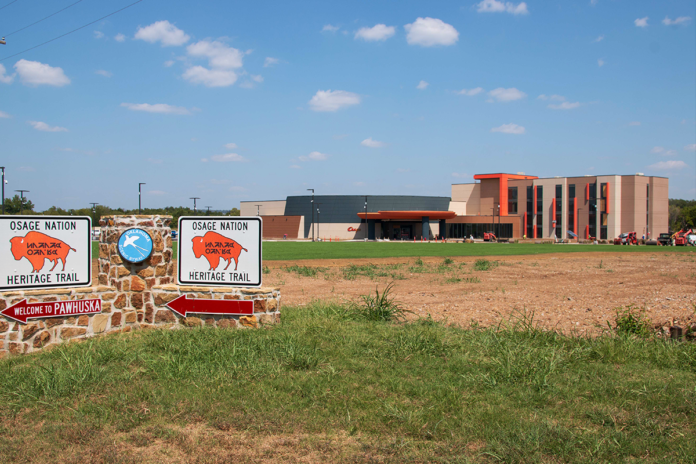
Written by Benny Polacca
After braving construction delays, the Pawhuska Osage Casino & Hotel is opening its doors on Oct. 5 with a ribbon-cutting commemoration and will host an Oct. 4 exclusive preview of the property for Osage tribal members.
Osage Casinos announced the Pawhuska opening festivities on Aug. 31 after casino management adjusted the opening date. Previously casino officials said the opening would take place before year’s end in wake of the supply chain issue with imported electrical switchgear equipment delayed for both the new Pawhuska and Bartlesville gaming properties.
“This property has been a long time coming. We’re so proud to share this beautiful facility with the Pawhuska community and our Nation, and it’s amazing to see all the hard work come to fruition,” Osage Casinos CEO Kimberly Pearson said in a statement.
Located just outside of downtown Pawhuska at the Highways 60 and 99 intersection, this new entertainment hub is in the heart of the Osage Nation, according to a news release. The new casino will boast an expanded gaming floor and over 3,000 square-feet of quality event space, an eatery and a 47-room hotel. The hotel also includes a fitness center and outdoor area outfitted with a pool, hot tub, and refreshment bar for guests to enjoy during their stay.
An opening date for the Bartlesville casino and hotel has yet to be announced. ON government and Gaming Enterprise officials broke ground on both projects in back-to-back ceremonies on June 15, 2021.
The adjusted casino opening date also comes as the worldwide anticipated release of the Martin Scorsese-directed “Killers of the Flower Moon” film will open on Oct. 20. Anticipating an increase in tourism and regional interest, Pearson previously said the casinos will open as soon as possible with the movie opening coming during her April presentation at the United Osages of Southern California gathering.
The new Pawhuska property will stand at 87,808 square feet, employ more than 100 people and serve as a hospitality resource for the influx of visitors and businesses coming to the Osage Nation. On the day the new casino officially opens, the existing location in the Pawhuska Village will close.
“At the heart of Osage Casinos is a dedication to supporting our Nation. As Pawhuska continues to expand, this new property is our chance to give back to our people and showcase Osage culture,” Pearson said. “We’re honored to be a part of the momentum taking place in our Nation’s capital.”
Jaune Quick-to-See Smith: Memory Map
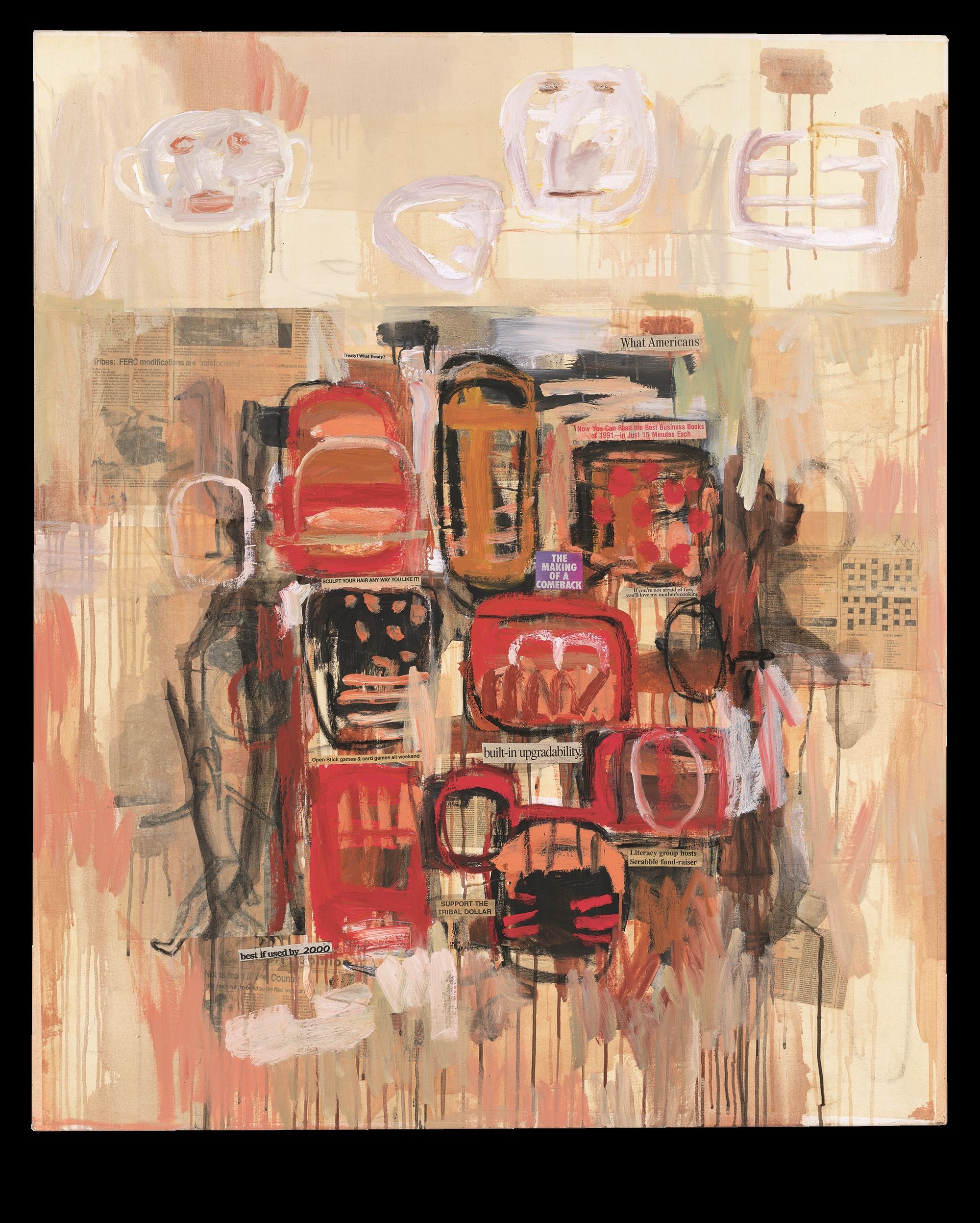
On View October 15, 2023-January 21, 2024
The Modern Art Museum of Fort Worth announces the exhibition Jaune Quick-to-See Smith: Memory Map recognizing Smith’s nearly five-decade career as an artist, activist, curator, educator, and advocate.
Organized by the Whitney Museum of American Art, New York, the exhibition, on view at the Modern from October 15, 2023 through January 21, 2024, is a recognition of a groundbreaking artist’s work. For nearly five decades Jaune Quick-to-See Smith, a citizen of the Confederated Salish and Kootenai Nation, has charted an exceptional and unorthodox career as an artist, activist, curator, educator, and advocate. The exhibition highlights how Smith uses her drawings, prints, paintings, and sculptures to flip mainstream historical narratives and illuminate absurdities in the dominant culture.
Memory Map is the largest and most comprehensive showcase of Smith’s career, featuring more than one hundred works. Organized thematically, the exhibition offers a new framework to consider contemporary Native American art, addressing how Smith has initiated and led some of the most pressing dialogues around land, racism, and cultural preservation. It celebrates the artist’s dedication to creativity and community, emphasizes her deep political commitments, and offers essential and potent reminders of our responsibilities to the earth and each other.
Smith engages with modern and contemporary modes of artmaking, from an idiosyncratic adoption of abstraction to American Pop Art to Neo-Expressionism. She reimagines these artistic traditions with concepts rooted in her own cultural practice to examine contemporary life in America and interpret it through Native ideology.
Since the 1970s, Smith has built a visual language that includes recurring imagery such as trade canoes, horses, bison, and flags, alongside common materials like newspaper, fabric, and commercial objects. Throughout her work she addresses urgent concerns about ecological disaster, the misreading of history, and the genocide of Native Americans, while also evoking the power of kinship and education.
This exhibition is organized by Laura Phipps, Associate Curator at the Whitney Museum of American Art, with Caitlin Chaisson, Curatorial Project Assistant.
“Through her sophisticated use of color, materials, and humor, Smith’s work prompts important conversations about history and education—and ultimately about the obligations we have to each other and the world around us,” says Phipps. “From the inception of Memory Map, Smith and I had hoped for her messages and her art to reach audiences across the country and we are so thrilled to see them in the context of the Modern Art Museum of Fort Worth.”
"The Modern is honored to host Jaune Quick-To-See Smith: Memory Maps. We are grateful to collaborate with the artist and the Whitney Museum on this important exhibition," says Dr. Marla Price, Director, Modern Art Museum of Fort Worth. "This is the first large-scale presentation of Jaune Quick-To-See Smith's work in our region, giving our community and visitors the opportunity to experience the important stories she tells throughout her groundbreaking career.”
EXHIBITION OVERVIEW — JAUNE QUICK-TO-SEE SMITH: MEMORY MAP
Jaune Quick-to-See Smith: Memory Map highlights the artist’s lifelong approach to storytelling, rooted in her abiding respect for and connection to the land. Today Smith lives and works in New Mexico, but she spent her early years in the Pacific Northwest and on Confederated Salish and Kootenai land in western Montana. Her work draws attention to the continued existence of Indigenous peoples despite centuries of attempted erasure by waves of European invaders and the policies of the United States government. Smith emphasizes that it is important that her work “leaves an imprint on the land that says, ‘we are here, we have been here, and these are our stories.’ These are my stories, every picture. Every drawing tells a story. I create memory maps.”
Early Work
Smith knew from an early age that she wanted to be an artist but was discouraged by professors who didn’t believe women—much less Native American women—could have careers as artists. In the 1970s and early 1980s, Smith drew and painted places with personal significance, including Wallowa, Oregon, and her tribe’s reservation in Montana. These works, which she came to describe as maps, reject conventions employed by Western landscape painters. Instead of romanticized panoramas that survey unpopulated lands from a distance, Smith depicts inhabited places, her mark-making conveying human and animal movements. Many of the early works exhibited in Memory Map, like Indian Madonna Enthroned, 1974, have rarely been on public view.
Dedication to Land
Between 1985 and 1989, Smith concentrated on two series that highlight her role as an activist and artist: Petroglyph Park and Chief Seattle (C.S.). Despite their stylistic differences, both bodies of work demonstrate Smith’s engagement with ongoing land rights conflicts and historical injustices. Smith became active in land preservation efforts and supported campaigns to save areas of New Mexico where ancient petroglyphs
were at risk of being destroyed due to residential development efforts. Petroglyph Park is the first series in which Smith responded directly to news media, an approach that has since been integral to her practice. Works in the Chief Seattle (C.S.) series continue the artist’s critique of reckless extraction and industrialization and consider broader regional and global environmental concerns such as acid rain and dependence on fossil fuels. While mainstream environmentalism at the time concentrated on issues like pollution and recycling, Smith’s work draws a connection between the exploitation of land and resources with blatant disregard for treaties between the U.S. government and Native American nations. With the paintings and drawings in these series, Smith implores future generations to understand their connection to the land and work to forestall ecological crisis.
Depictions of a Postcolonial World
In response to the 1992 U.S. quincentennial celebration of Christopher Columbus landing in the Americas, Smith brought attention to the fact that Columbus’s arrival led to one of the largest and most sustained genocides in human history. This period marks some of Smith’s most prolific work as an artist, curator, and collaborator. She created dozens of new artworks and organized exhibitions and “anti-celebration” events with her peers.
Though her politics had always been embedded in her work, this particular moment in American history became Smith’s opportunity to develop more direct and accessible approaches to her work. She introduced many of her now iconic motifs, like the trade canoe and bison, and incorporated techniques like collage. Works in this section, such as I See Red: Snowman, 1992, confront the violence of displacement and the extreme inequities of the earliest negotiations between Indigenous peoples and settlers in North America.
Reflections on Invasion
Throughout the 1990s and 2000s, in response to U.S.-led invasions domestically and abroad, Smith’s work considers the conflicts incited by both colonialism and imperialism. A 1993 series of prints and drawings depict a well-known image of General George Armstrong Custer, the U.S. Army officer known for his deadly campaigns against Lakota, Arapaho, and Northern Cheyenne people in the late 1860s.
Moving forward in time, paintings and prints from the 2000s communicate Smith’s outrage over the invasion of Iraq and President George W. Bush’s post-9/11 policies. Smith’s work from this period conveys her visceral and consuming reaction to the horrors of war. Paintings like Trade Canoe for Don Quixote, 2004, use art historical references like Picasso’s Guernica, images of Sumerian artifacts looted from the Iraq Museum, and political cartoons by José Guadalupe Posada to highlight how cultural property is targeted and weaponized in these conflicts.
Critiques of Capitalism and Consumerism
In recent decades, Smith’s work offers a biting critique of the dominance of capitalism and consumerism in American culture. Frequently employing satire and humor in her paintings and prints, Smith targets the imported concepts of property and commodity goods, which decimated Indigenous economies, diets, and medicinal practices. She takes aim at manifest destiny, an Anglo-Christian doctrine that positioned westward expansion and the attempted extermination of Indigenous peoples as part of a divine plan.
The repercussions of these policies live on in the many ways that contemporary consumer culture has infiltrated Native American traditions. In works like The Rancher, 2002, Smith draws connections between visual tropes of the “Wild West,” like the “cowboys and Indians” seen in advertising and entertainment, and the seemingly unlimited reach of corporate influences into even the smallest and most personal experiences of contemporary daily life.
Legacy and Matriarchy
Smith often makes a simple but profound observation: “My existence is a miracle.” Despite genocide, decades of war, forced assimilation, and systemic oppression, she and other Indigenous survivors are still here to practice and share their culture.
Throughout her work, Smith acknowledges that the wisdom of ancestors and elders is not only sacred but essential for protecting and preserving traditions for future generations. Throughout her career, Smith has represented matriarchal leaders across many works, conveying the individuality and strength of women who juggle their responsibilities to family and community in the face of prejudice and discrimination.
U.S. Maps
The map of the United States is one of the most central and recognizable motifs throughout Smith’s paintings, drawings, and prints. Her works reveal the falsehoods and assumptions underlying this supposedly objective image, challenging its authority and symbolic power.
In Smith’s interpretations of the map of North America, the land transgresses and overruns current borders, demonstrates changing populations and notions of citizenship, and foregrounds how Indigenous peoples have shaped this continent since long before the European invasion. Smith’s works reflect her philosophy of maps: they are pictures of experiences rather than edges of geopolitical borders—an understanding of land that privileges relationships, stories, and memory.
Environment and Intervention
The industry and government abuse and mismanagement of the environment have been key concerns in Smith’s work throughout her career. As the artist has said, “ecology is a science that has been practiced by the Native peoples on this continent for thousands of years. For instance, in my tribe, after harvesting the bitterroot for the spring feast, there is the specific act of cleaning the bitterroot plants to ensure next year’s crop. This is giving back. This has been our way of survival.”
Trickster
Smith’s art continues the storytelling tradition she grew up with. From an early age, she heard the creation stories of the Salish people from her grandmothers and aunts. Coyote plays an important role in these stories. First sent by the Creator to prepare the earth for humans, Coyote taught the Salish about spirituality and the sacred relationship between people, the land, and all living creatures.
But Coyote is also a trickster whose lessons reveal the chaos of human lives and the hubris in their actions. Smith embraces the duality of teacher and trickster in her artistic practice: “The creator, inventor, satirist must show the flip side of things. They turn things upside down in order to lampoon the immorality or insincerity of politicians, priests, or heads of government or show the human condition.”
Catalogue
An accompanying exhibition catalogue, Jaune Quick-to-See Smith: Memory Map, published by the Whitney and distributed by Yale University Press, features essays by curator Laura Phipps, Candice Hopkins, Richard William Hill, and Josie M. Lopez, along with a conversation between Jaune Quick-to-See Smith and Lowery Stokes Sims. The publication includes illustrations of nearly five decades of Smith’s work in all media, accompanied by poems and texts by contemporary Indigenous artists and scholars on Smith’s major bodies of work. Copies will be available for purchase online and in the Modern Shop ($65).
ABOUT THE ARTIST
Jaune Quick-to-See Smith (b. 1940) is a citizen of the Confederated Salish and Kootenai Nation in Montana. Smith has been creating complex and abstracted paintings and prints since the 1970s. Combining appropriated imagery from commercial slogans and signage, art history, and personal narratives, she forges an intimate visual language to convey her insistent socio-political commentary with powerful clarity. Smith’s multifaceted work is grounded in themes of personal and political identity and the importance of land.
Smith received an AA degree from Olympic College in Bremerton, Washington, in 1960; a BA in art education from Framingham State College, Massachusetts, in 1976; and an MA in Visual Arts from the University of New Mexico in 1980.
Smith has received numerous awards, including the Academy of Arts and Letters Purchase Award (1987); Joan Mitchell Foundation Painters & Sculptors Grant (1996); Women’s Caucus for the Arts Lifetime Achievement Award (1997); College Art Association Women in the Arts Award (2002); New Mexico Governor’s Award for Excellence in the Arts (2005); ArtTable Artist Honoree (2011); Georgia O’Keeffe Museum Living Artist of Distinction Award (2012); Montana Governor’s Award (2018); New York Foundation for the Arts Murray Reich Distinguished Artist Award (2019); United States Artists Fellowship (2020); Anonymous Was A Woman Award (2022); and Barnard College’s 2022 Medal of Distinction (2022). Smith has been honored with honorary doctorates from the Minneapolis College of Art and Design (1992); Pennsylvania Academy of Fine Arts, Philadelphia (1998); Massachusetts College of Art and Design, Boston (2003); and the University of New Mexico, Albuquerque (2009).
Smith’s work is in the collections of the Albuquerque Museum, New Mexico; Brooklyn Museum, New York; Eiteljorg Museum, Indianapolis; Heard Museum, Phoenix; Metropolitan Museum of Art, New York; Missoula Art Museum, Montana; Museo de Arte Moderno, Quito, Ecuador; National Gallery of Art, Washington, DC; Smithsonian American Art Museum, Washington, DC; Walker Art Center, Minneapolis; Whitney Museum of American Art, New York; and Yellowstone Art Museum, Billings, Montana, among many others.





